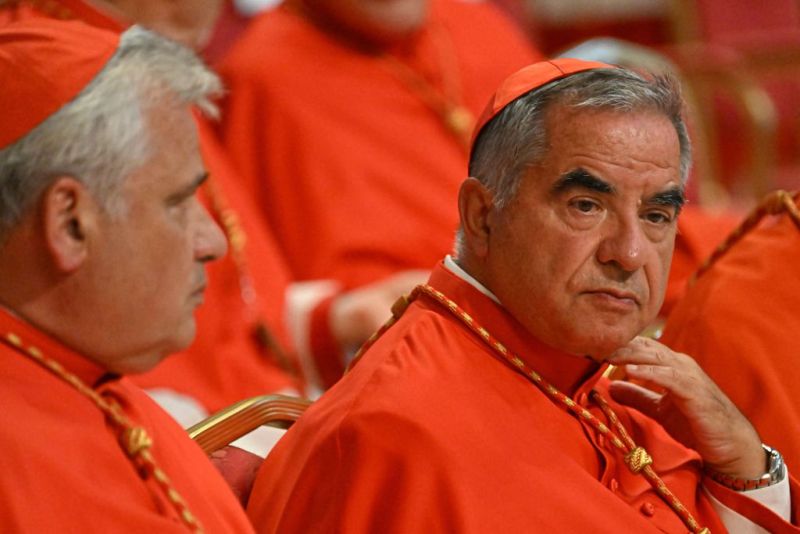 Portrait of Russell M. Nelson, 17th president of the the Church of Jesus Christ of Latter-day Saints. / Credit: Deseret News, CC BY-SA 4.0 via Wikimedia Commons
Portrait of Russell M. Nelson, 17th president of the the Church of Jesus Christ of Latter-day Saints. / Credit: Deseret News, CC BY-SA 4.0 via Wikimedia Commons
Washington, D.C. Newsroom, Oct 1, 2025 / 18:37 pm (CNA).
A small Catholic church in Heber City, Utah, will offer a Mass for the repose of the soul of Russell M. Nelson, the president of the Church of Jesus Christ of Latter-day Saints (LDS), who died on Sept. 27 at the age of 101.
St. Lawrence Catholic Church, a mission church of St. Mary's in Park City, will celebrate the Mass at 9:30 a.m. on Thursday, Oct. 2. The community will pray a rosary for the repose of his soul at 8:45 a.m. before the weekday Mass begins.
Catholics offer prayers for the dead to ask God to grant graces to the recently deceased for the purification of their souls, which may not be complete at the moment of the person's death.
The church extended an "open invitation" to everyone in the Heber Valley community to attend the Mass in a message posted to Facebook. It is open to any person who wants to join in prayer for Nelson, "especially our LDS neighbors," according to the post.
"We are grateful for President Nelson's kindness to the Catholic community especially in Utah," the post read. "Over the years, he has led efforts to support our Catholic charity work as well as renovation projects at the Cathedral of the Madeleine — our mother church for the Diocese of Salt Lake City."
Justin Hibbard, the mission administrator and director of evangelization at St. Mary's, told CNA the Catholic community in Heber Valley has a "great relationship with our LDS neighbors here."
He noted the area is predominantly LDS, and nearby congregations have volunteered to help with Catholic service projects. He said he suggested a Mass for the repose of the soul of Nelson to St. Mary's pastor, Father Arokia Dass David, who felt it would be "a great way to show solidarity to our community and be good neighbors to our Mormon friends."
"These are the types of things our community needs to bring us together and to do things together as a broader faith community," Hibbard added.
Hibbard said he expects one of Nelson's daughters to attend the Mass. He said the church will have rosaries and handouts explaining how to pray the rosary for non-Catholics who attend the Mass and are unfamiliar with the prayers. He said a member of a local LDS ward reached out to him to request materials to "help people with praying the rosary."
The church has enough pews for about 130 people. Hibbard said the weekday morning Masses usually get about 25 to 30 people, but he expects a much larger number on Thursday because of the LDS members who are likely to be in attendance.
Father Christopher Gray, the rector of the Cathedral of the Madeleine in Salt Lake City, said in a statement that he thanks Nelson and the LDS community for the support for the cathedral in recent years and expressed sorrow for his death.
"As the mother church for Catholics in Utah, the Cathedral of the Madeleine joins the world in mourning the passing of President Russell M. Nelson," he said in a post on Facebook. "We offer our condolences to our brothers and sisters of the Church of Jesus Christ of Latter-day Saints."
Gray noted that Nelson offered his condolences when Pope Francis died earlier this year. Gray added: "With a heavy heart, I express my gratitude for [Nelson's] lifetime of dedication, faith, and service, and I thank our LDS neighbors for generously sharing his teaching with us."
Nelson met Francis at the Vatican in 2019, which was the first-ever meeting between a pope and an LDS president.
Gray told CNA he is "tremendously grateful for the charitable work of the [LDS] throughout the world, and the many ways it interfaces with the work of Catholic organizations like Catholic Relief Services."
"In Utah, we work together closely and are grateful to the LDS members who, under the leadership of President Nelson, have so powerfully witnessed to the dignity of all people by working with the Diocese of Salt Lake City's Catholic Community Services," he said. "We are united in meaningfully assisting the poor, the afflicted, the refugees, and others in need here in Utah, and this same spirit can be seen at work around the world."












